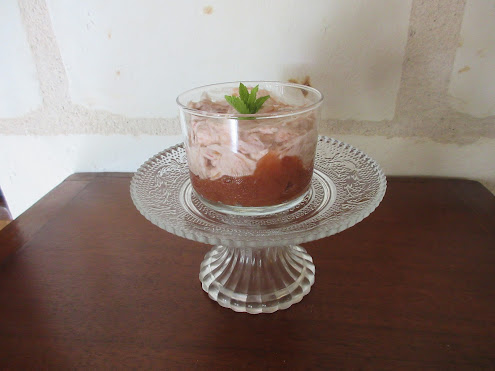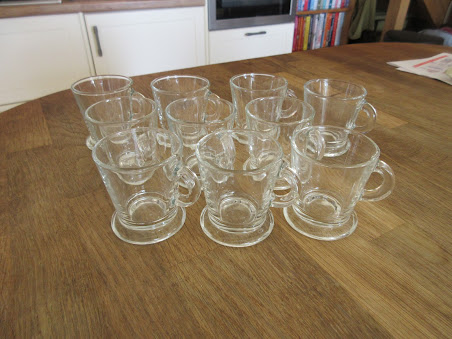
The plum version before baking.
There is no pastry involved so some would ask - how can it be a tart? I spent a happy few minutes looking up the definitions of cake, tart, torte and gateau and came to the conclusion that although it was definitely not a cake, a flan or a pie I still had no idea! In any case it went down well for dessert at a BBQ one very hot June evening.
The plum version when cooked.
The first time I made this it was definitely a bit overdone - the plums looked a bit crozzled and it was a devil to get out of the tin. Only when I made it the second time did I realise that I had baked the first one at 160° fan instead of 160° C. A casualty of the debilitating heat - it had reached 39°C during the day and my concentration withers exponentially over 30°C!
The nectarine version - much less crozzled.
For the second time I used nectarines, didn't cram quite as much fruit in, and kept the slices away from the sides of the tin, which definitely made it easier to turn out, baked it at the right temperature and kept my eye on it. With its apricot glaze it had that patisserie glamour. It tasted great too.
Stoning the fruit can be a bit fiddly. An old fashioned grapefruit knife came in handy for getting the stone out of some of the firmer fruits. Changing the ordinary flour for gluten free flour (e.g. Doves Farm) will make it a gluten free dessert and a handy recipe to have instead of pavlova.
Ingredients
For the cake base
zest of 1 lemon
2 tsp lemon juice
30ml whole milk
125g softened butter or baking spread (I used Le Fleurier)
125g caster sugar
1 egg
125g plain flour or gluten free flour
125g ground almonds (or half and half ground almonds and ground rice)
For the topping/fruit
10-12 ripe plums or 3 large nectarines
2 tblsp apricot jam
Method
Butter the base and sides of a 23cm loose bottomed tart tin.
Put the milk and lemon juice into a small bowl or jug, mix together and set aside
In a large bowl, cream together the butter, lemon zest and sugar. Add the egg and beat well until well combined.
Fold in the ground almonds (or almonds and rice), then the flour followed by the thickened milk.
The mixture will be quite thick so transfer it to the prepared tin and level with the back of a spoon or small palette knife. Smooth the surface as much as possible then put the tin in the freezer while you prepare the fruit.
Cut each plum or nectarine in half and remove the stone. Cut into quarters and slice thinly. Plums should make 8 slices each, nectarines 12 slices.
Preheat the oven to 160°C / 140° fan / gas mk3.
Remove the tart case from the freezer and arrange the slices of fruit neatly in circles on top of the cake base.
Stand the tart tin on a baking sheet and bake in the oven for about 1 hour. The fruit should be tender and the cake base lightly golden and cooked.
Remove from the oven to cool slightly. Remove the tart from the tin and place on a serving plate.
To make the glaze, warm the apricot jam in a saucepan with 1 tblsp water. Brush over the fruit.
Serves 8-10.

















